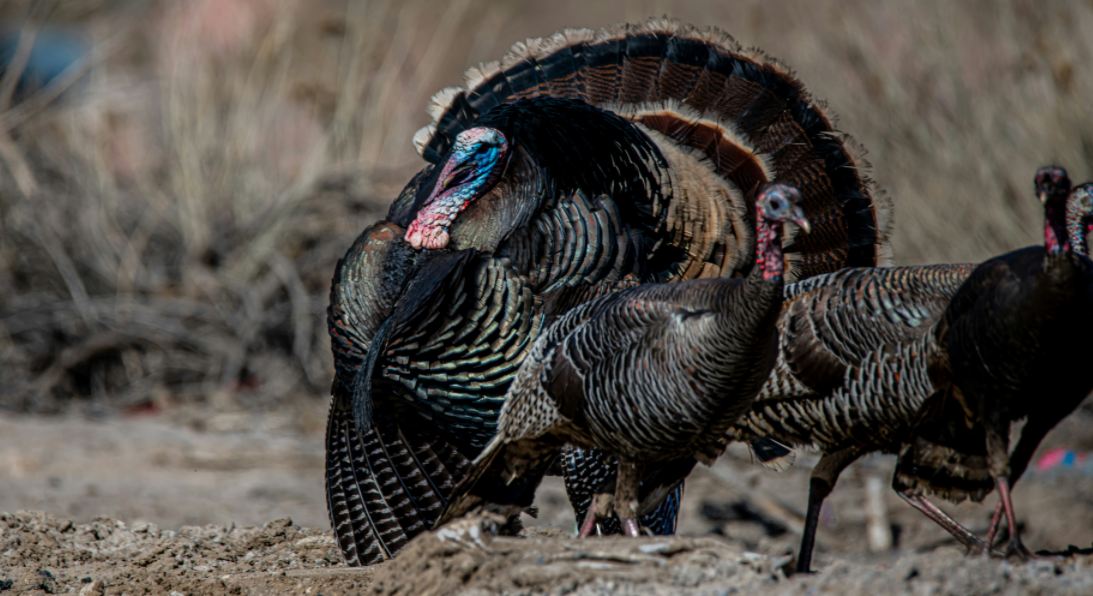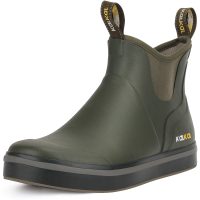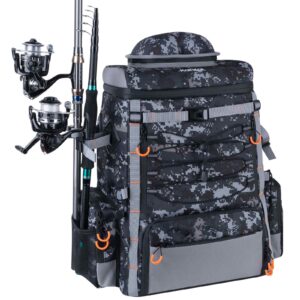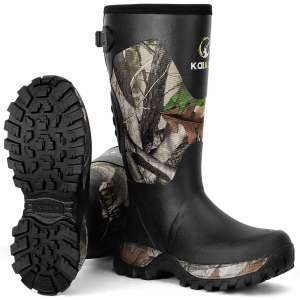Every hunter must know how to dress a wild turkey right after a successful hunt. Dressing the turkey right helps keep its meat fresh, safe, and ready to cook.
Here is everything you need to know about this art-from basic tools to step-by-step guides, tips, and cooking ideas from start to finish. In the end, you will have been able to field-dress the turkey easily and enjoy the taste of the meat.
What You Need to Dress a Wild Turkey?
Necessary Tools for Turkey Field Dressing
Before you start, collect these important tools to make the process go as smoothly and as efficiently as possible:
- Sharp Knife: A quality sharp knife will be needed for cutting through skin, feathers, and meat.
- Game Shears: These will come in handy when cutting through bones, particularly when removing wings or legs.
- Disposable Gloves: These will protect your hands and minimize the possibility of contamination.
- Plastic Bags: To keep the meat and organs that you want to save.
- Cooler with Ice: To preserve the freshness of the meat after dressing.
- Paper Towels or Clean Cloths: To clean the meat and your hands and tools.
- Paracord or Rope: To suspend the turkey should you still want to work on it while hanging.
Which Parts of Turkey Meat Should You Preserve?
When dressing a wild turkey, focus on preserving the following parts:
- Breast Meat: The largest portion of the turkey and most widely used.
- Legs and Thighs: These are tasty, but they are typically tough and have to be slow-cooked.
- Wings: Good for soups or stocks.
- Giblets (Heart, Liver, and Gizzard): These are normally used to create gravies or stuffings.
Preparations Before You Start
To prepare for a more efficient and safe process, please follow these preparations:
- Find a Clean, Flat Work Area: Select a site that has room to work, preferably away from dirt or debris.
- Wear Protective Clothing: Put on gloves and an apron to maintain your cleanliness while working.
- Inspect the Turkey: Examine the bird for any visible sign of injury, disease, or contamination.
- Chill the Turkey: If at all possible, dress the turkey within hours of harvest to keep the bird fresh.
Step-by-Step Guide to Dressing a Wild Turkey
Detailed Steps for Field Dressing a Turkey
- Position the Turkey: Place the turkey on its back and have the breast side facing up. Choose a firm surface to avoid slipping.
- Make the First Incision: Make a small cut with a sharp knife under the breastbone. Avoid cutting too deep in order not to cut inner organs.
- Carefully extend the incision: Make sure to cut carefully towards the tail without piercing the intestines or stomach to keep the meat from becoming contaminated. Remove Entrails Reach inside the cavity and gently pull the organs outward, working methodically to avoid rupturing parts that may release unpleasant odors or fluids.
- Save the Giblets: If desired, set aside the heart, liver, and gizzard for later use. Giblets are often used in traditional gravies and stuffing recipes.
- Clean the Cavity: Wipe the interior with paper towels to remove any remaining blood or debris. For thorough cleaning, rinse the cavity with cold water if available.
- Cut Off the Head and Feet: If you do not need the head and feet, use game shears or a sharp knife to cut them off. This makes storage and preparation easier.
- Remove the Wings (Optional): If you are not going to use the wings, cut them off at the joints. Wings can be used for stocks or soups but are usually discarded because they yield less meat.
Pro Tips for Efficient Field Dressing
- Work in the proper light, such as morning hours or during dusk, to easily be able to perform this process.
- Ensure that one makes use of a sharp knife to ensure ease in the operation besides safety in field dressing.
- Prevent exposure between meat and contaminated surfaces to ensure minimization of contaminants Storing Meat from Turkey to Stay Fresh.
Storing the Turkey Meat to Keep It Fresh
- Cool the Meat Immediately: Put the dressed turkey in a cooler with lots of ice. Cooling meat quickly reduces the growth of bacteria and maintains freshness.
- Do Not Touch Ice Directly: Place the meat on plastic bags or a clean cloth. Direct contact of the meat with ice can lead to freezer burn or change the texture of the meat.
- Refrigerate or Freeze: If you’re not cooking the turkey within a day or two, store the meat in a freezer. Properly wrapped turkey meat can remain fresh for months when frozen.
- Vacuum Seal for Freshness: Use a vacuum sealer to remove air and extend the shelf life of the meat.
- Label and Date: Clearly label packages with the date of storage to keep track of freshness.
- Defrost Properly: When it is time to cook, thaw the turkey in the refrigerator to ensure food safety.
Tips and Tricks for Dressing a Wild Turkey
How to Ensure a Clean and Efficient Process?
- Work Slowly: Rushing makes mistakes more likely, like cutting where you shouldn’t cut, or damaging the meat. Be precise and clean up when you take your time.
- Keep Tools Clean: When handling raw meat hygiene matters. Before and after each use, sanitize your knife, game shears, and whatever other tools you use to make sure you don’t contaminate your food. Dispose of gloves to keep your hands clean from the spread of bacteria.
- Dispose of Waste Properly: Dispose of turkey remains responsibly, once field dressed. Securing the waste such that scavengers or predators are attracted to the area is prevented and the ecological balance and safety of your hunting areas are kept.
- Plan Your Work Area: A clean, flat, shaded spot is where you set up your dressing station. It cuts down the danger of contaminating the meat and speeds up the process. Keep a trash bag or container nearby for easy cleanup.
- Use Cooling Methods: When you’re finished with your dressing, store the meat in a cooler with ice to kill it. If you’re avoiding the freezing plate, don’t leave the meat raw out on the ice, put the meat in plastic bags to keep it dry and fresh.
- Stay Prepared for Unexpected Challenges: Just bring extra gloves, a backup knife, and some cleaning materials if very improbable. It guarantees that the dressing process never becomes canceled if something goes wrong.
Common Mistakes to Avoid
- Puncturing Organs: During the dressing process, avoid the puncturing of the intestines, stomach, or other internal organs. You can end up with contamination, spoilage, and ugly odors. Make sure to work carefully, and cut with a controlled cut.
- Delaying the Process: When you hunt the turkey, field dress them as soon as possible. Bacterial growth and spoilage are always a risk, but the longer you take to refrigerate, the more likely it is to occur if the temperature heats up. The meat is fresh and safe once it is dressed immediately.
- Using a Dull Knife: The sharper the knife, the more effective and the safer you are. With a dull knife, you need more pressure, which increases your risk of slipping and injury. So, keep your knife sharp and regularly.
- Skipping a Thorough Inspection: Inspect the turkey always for diseases, parasites, or injuries that might affect the quality of the meat. Before proceeding look for discoloration, strange odor, or odd texture.
Preparing and Cooking Your Wild Turkey
How Does Turkey Meat Taste?
Store-bought turkey meat is not as lean, and not as flavorful as wild turkey. Domesticated turkey is bred for size and fattiness, and has a milder, easier-to-work with taste and texture; wild, gamey-tasting turkey has more to offer.
The bird’s natural diet of seeds, insects, and plants gives the bird its unique earthy, savory taste as a result. The flavor is described by some hunters as a touch nutty or herbaceous, which makes it unusual in its way.
Wild turkey is leaner than other birds; therefore, it needs to be prepared carefully so that it won’t dry out while cooking.
Are Turkeys Safe to Eat?
If wild turkey is your meal, you must check your meat to be certain it is safe to consume. Look for the following signs:
- Unusual Discoloration: For breasts, healthy turkey meat should be pale pinkish white, whereas the legs and thighs should be darker. Don’t eat meat with shades of greenish, yellowish, or grayish.
- Abnormal Smells: Fresh turkey meat should also smell mild. Some strong, sour, or foul odors may indicate spoilage or contamination.
- Signs of Parasites: Turndown the cavity so you can inspect it and the meat for visible worm cysts or other strange formations. Occasionally parasites can be found in wild game.
Consult a wildlife authority or a local game specialist before eating any part of the animal if you notice or suspect you have any of these signs.
While properly cooking the meat to an internal temperature of at least 165F should kill most bacteria and pathogens, it’s best to play it safe if the meat looks sketchy.
How to Prepare and Cook Turkey Meat?
1.Marinate the Meat
Marination in wild turkey is a big plus that works, it tends to the meat and gives it some flavor. If you keep a few basic things in mind, marinating your food doesn’t have to be complicated. The best results come when marinating the meat minimum of 4-6 hours or overnight.
2. Cook Slowly
Unlike other poultry, wild turkey’s lean meat can become tough if overcooked. To retain its tenderness, use slow cooking methods such as:
- Roasting: To keep the turkey moist roast it at a low temperature and baste frequently.
- Smoking: When cooking the meat slowly and evenly, smoking only adds a deep smoky flavor.
- Braising: That’s because cooking the meat in a flavorful liquid, ie. broth or wine, helps keep it juicy and tender.
3. Experiment with Recipes
Versatile, wild turkey can be used in several dishes. Here are some popular options:
- Turkey Chili: A hearty chili recipe compliments well with ground or shredded turkey.
- Roasted Breast: Roast the breast meat with season to have a flavorful main dish.
- Slow-Cooked Legs: Tougher but tender and tasty cold, or slow-cooked in a stew or braised with vegetables, the legs are more difficult to develop.
How to Use Different Parts of the Turkey?
Breasts: The turkey has breast meat which is the biggest and most tender part of it. It is the best for grilling, roasting, frying, or cutting ready-for meals like Turkey Schnitzel or Stir-Fry.
Legs and Thighs: As you can see, these parts are more flavorful ones, but they contain more connective tissue, therefore, they are quite tender. They tend to be a little tough, so help to break them down and make them a bit tender by slow cooking the legs and thighs in soups, stews, or braised dishes.
Wings: Turkey wings are smaller, but they are full of flavor. They’re great for rich stocks or soups. Or bake or grill them for the best appetizer.
Giblets: Giblets—heart, liver, and gizzard—make culinary treasures. Using them, you can make savory gravies, stuffing, or pates. You can also bread and fry the gizzard for a crispy treat as well.
Conclusion
While it is intimidating when dressing a wild turkey at first, there are some tools, prep, and guidance that can make it the most rewarding part of the hunting experience.
If you follow this guide you will have a clean and efficient process, save your best cuts of meat, and enjoy a succulent meal around which your well-deserved success in the field can be celebrated.
Learn more about turkey hunting:
- How to Hunt Public Land Turkeys?
- The Best Time To Turkey Hunt
- How to Score a Turkey?
- 7 Best Turkey Hunting Boots To Gear Up



















Leave a reply